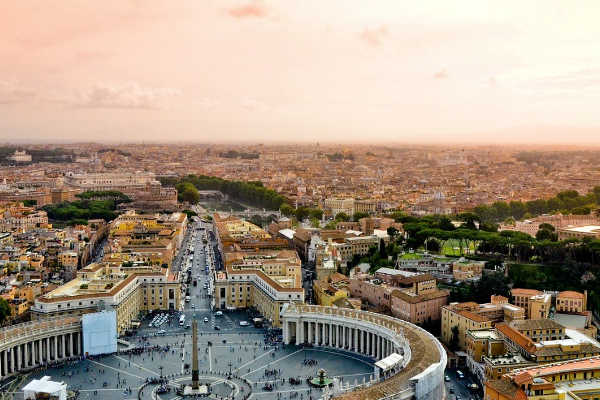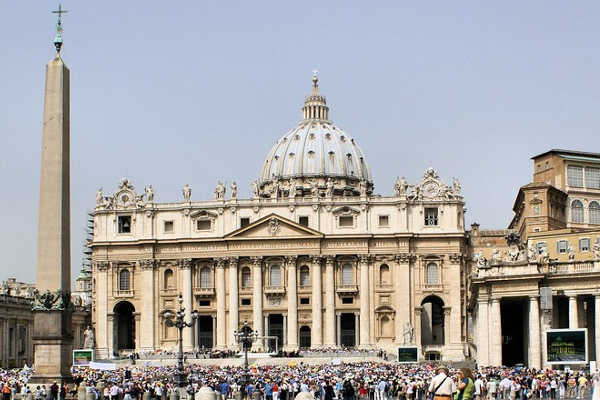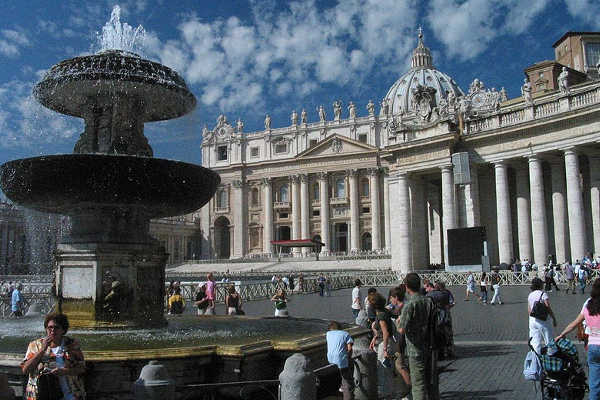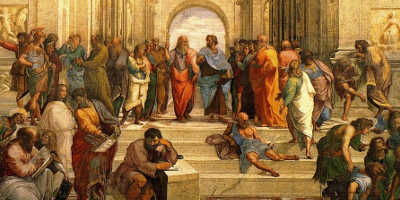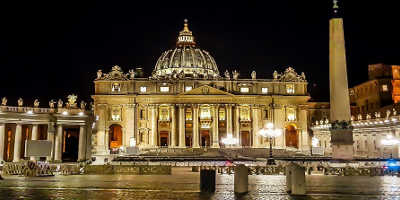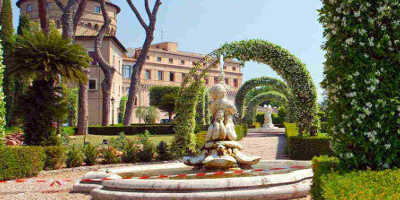St. Peter's Square, Vatican City
Watched over by St Peter’s Basilica, St Peter’s Square is a large and beautiful piazza with much to explore and appreciate.
The Vatican is filled to the brim with world-renowned buildings and structures of all kinds. Though people travel from across the globe to view what’s on display inside these buildings, many of which are museums, some forget to enjoy the beauty of what’s outside.
What is St Peter’s Square
St Peter’s Basilica is arguably the most famous building in Vatican City, and certainly the largest. While the building both inside and out is an absolute work of art, the grounds located directly on this building’s doorstep can prove to be just as much of an attraction. This large plaza, like the basilica, was named after Saint Peter who was one of Jesus’ apostles as well as the first Catholic Pope. The piazza is built at the site where St Peter was killed. Emperor Constantine originally built a church over the site of the grave but it was later rebuilt and made into the Basilica and square we know today. This is also one of the largest squares in the world, at 320m in length and 240m in width, it can hold a staggering 300,000 people.
When was St Peter’s Square Built?
Pope Alexander XII oversaw the project, with the skilled hands of Gian Lorenzo Bernini working tirelessly on the design and construction from 1656 to 1667. The original purpose of this square in the words of Pope Alexander XII was ’so that the greatest number of people could see the Pope give his blessing’. Though Bernini’s work ended in 1667, his pupils continued to add to the square, installing 140 total statues above the columns in 1670.
To add to the true magnificence of St Peter’s Square, the Royal Staircase was built between 1662 and 1666, just in time for the completion of the square. These stairs link the square to the Vatican Palaces and are themselves a sight to behold. What makes them so unique is their forced perspective. The designers of these stairs created them to look much longer than they are, and though they only measure at 60 meters, they appear to be a little over 100. This was achieved by the continual narrowing of the staircase’s width, and the designers even went so far as to reduce the distance between the columns towards the top.
The structures in St Peter’s Square
The square is framed by a large colonnade that extends from the basilica and then opens into a large, curved shape that surrounds the main piazza. The colonnade is made up of 284 large, unfluted columns and 88 pilasters. The simplicity of the columns is intended to direct the eyes of the viewer to the front of the basilica. The space and structures of St Peter’s Basilica are an example of counter-reformation architecture. The colonnade and square were built in such a way as to welcome followers back to the church following the protestant reformation which had begun in 1517. The colonnades that extend from the basilica and surround the square are said to be, according to Bernini, “the motherly arms of the church” which reach out to embrace the faithful and to bring people back to the church.
Sitting above the colonnade are 140 statues, each representing saints, that watch over the square. Though all of these installations are impressive, the most evident is the obelisk at the very heart of the square. Standing at 25 meters high, this phenomenal piece of rock was carried from Egypt to Rome in 37 AD by Emperor Caligula and was erected as part of a horse-racing circus. When it was first erected, it was not a religious symbol but a feature of a Roman Emperor. It was moved to St Peter’s square in 1586.
The fountains of the piazza
Two fountains within St Peter’s Square sit either side of the central obelisk. They were built by Carlo Maderno and Gian Lorenzo Bernini. The Maderno fountain was built upon a restored aqueduct (Acqua Paola) that was rebuilt by Pope Paul V. With this more abundant source of water present, the architect Carlo Maderno was permitted to redesign the fountain that was already there. The fountain is built upon an octagonal base and holds a large basin. Around the fountain are steps and small columns. At the top is mushroom-like cap adorned with scales that make the water glisten as it cascades over the stone. Due to the new aqueduct that was set high above sea-level, the waters of the fountain had enough pressure to be shot 20 feet into the air making it a sight to behold at the time of its construction.
The second fountain was made by Bernini and was completed years later in 1677. It was built to closely replicate the design of the Maderno fountain, which is very different from the usual Bernini fountains that were incredibly original and elaborate in design.
What events are held at St Peter’s Square?
The square still plays host to several important religious events. At the front of the basilica is a balcony where the Pope stands to conduct these ceremonies. The Pope will emerge onto this balcony for the first time following his election as pontiff. As he stands elevated at the front of the building, he is level with the saints that line the top of the piazza’s colonnade, placing him alongside them. The Pope will also stand on the balcony at both Easter and Christmas when he will address the thousands of followers that flock to St Peter’s Square.
A walk to St Peter’s Square and an exploration of the area is to understand the symbolism of the space to the Catholic church. The beautiful structures reflect the vast wealth and importance of the church whilst, at the same time, welcoming in visitors and followers.

